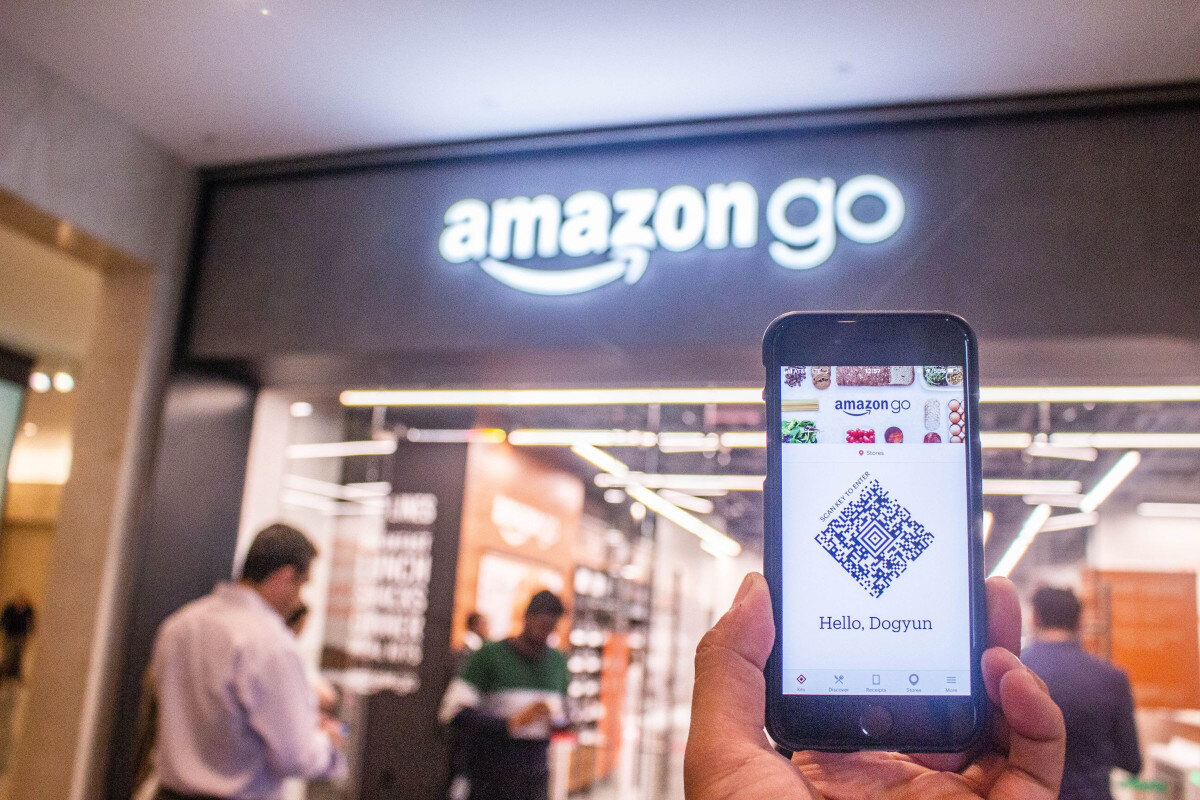Using Customer Future Value for Better Financial Projections
Customer future value (CFV) is how to measure the amount of potential revenue one guest should generate for your business over an identified future...
Platform
Combining online ordering, loyalty, omnichannel messaging, AI insights, and payments in one platform. Paytronix delivers relevant, personal experiences, at scale, that help improve your entire digital marketing funnel by creating amazing frictionless experiences.
A Complete Customer Experience Platform
Online Ordering
Acquire new customers and capture valuable data with industry leading customization features.
Loyalty
Encourage More visits and higher spend with personalized promotions based on individual activity and preferences.
CRM
Build great customer relationships with relevant personal omnichannel campaigns delivered at scale.
Artificial Intelligence
Leverage the most data from the most customer transactions to power 1:1 marketing campaigns and drive revenue.
Payments
Drive brand engagement by providing fast, frictionless guest payments.
Solutions
We use data, customer experience expertise, and technology to solve everyday restaurant and convenience store challenges.
Contactless Experiences
Accommodate your guests' changing preferences by providing safe, efficient service whether dining-in or taking out.
Customer Insights
Collect guest data and analyze behaviors to develop powerful targeted campaigns that produce amazing results.
Marketing Automation
Create and test campaigns across channels and segments to drive loyalty, incremental visits, and additional revenue.
Mobile Experiences
Provide convenient access to your brand, menus and loyalty program to drive retention with a branded or custom app.
Subscriptions
Create a frictionless, fun way to reward your most loyal customers for frequent visits and purchases while normalizing revenues.
Employee Dining
Attract and retain your employees with dollar value or percentage-based incentives and tiered benefits.
Order Experience Builder
Create powerful interactive, and appealing online menus that attract and acquire new customers simply and easily.
Loyalty Programs
High-impact customizable programs that increase spend, visit, and engagement with your brand.
Online Ordering
Maximize first-party digital sales with an exceptional guest experience.
Integrations
Launch your programs with more than 450 existing integrations.
Loyalty Programs
Deliver the same care you do in person with all your digital engagements.
Online Ordering
Drive more first-party orders and make it easy for your crew.
Loyalty Programs
Digital transformations start here - get to know your guests.
Online Ordering
Add a whole new sales channel to grow your business - digital ordering is in your future.
Integrations
We work with your environment - check it out.
Company
We are here to help clients build their businesses by delivering amazing experiences for their guests.
Meet The Team
Our exceptional customer engagement innovations are delivered by a team of extraordinary people.
News/Press
A collection of press and media about our innovations, customers, and people.
Events
A schedule of upcoming tradeshows, conferences, and events that we will participate in.
Careers
Support
Paytronix Login
Order & Delivery Login
Resources
Learn how to create great customer experiences with our free eBooks, webinars, articles, case studies, and customer interviews.
See Our Product In Action
E-Books
Learn more about topics important to the restaurant and c-store customer experience.
Webinars
Watch brief videos for tips and strategies to connect with your customers.
Case Studies
Learn how brands have used the Paytronix platform to increase revenue and engage with guests.
Reports
See how your brand stacks up against industry benchmarks, analysis, and research.
Blog
Catch up with our team of in-house experts for quick articles to help your business.
Are you missing these 5 strategies to transform guest engagement in 2025?
5 min read
Aug 23, 2024

Gift cards offer your restaurant a wealth of benefits. Not only do they provide stabilized revenue streams; they also help spread brand awareness and boost employee morale.
As of 2023, the global market for gift cards is valued at $984.3 billion. About 61% of customers spend more than their gift card amount, resulting in increased revenue for the restaurant. Additionally, a business that rewards employees with gift cards often sees a spike in employee satisfaction and decreased turnover rates.
Whether you’re just kicking off a gift card strategy for customers or rewarding employees, it’s essential that you’re familiar with the tax implications. Gift cards present a unique set of tax regulations. Your restaurant business must ensure compliance to avoid legal and financial issues.
Luckily, we’ve collected the information you need to know. In this article, we’ll look at proper tax treatment of gift cards, reporting, compliance, and how gift cards can enhance your loyalty strategy.
Modern-day customers want to stretch each dollar as far as possible. Loyalty programs, including reward dollars (which are roughly the points-based equivalent of gift cards) are compelling options. When done well, gift cards can increase guest engagement. Here’s how to start setting up your gift card program to maintain compliance.
Pro tip: According to a report from Bank of America, digital gift cards tend to contain higher amounts. In 2023, the average digital gift card held $83.95, whereas a physical gift card contained $63.86. Consider taking a mobile-first approach when developing your gift card reward program.
First, let’s look at the tax treatment of gift card sales. As a business, you have two options for how you capture gift cards when reporting income:
Say you sell a gift card for $50, but only $25 is redeemed by the end of the tax year. The default method would require you to capture the $50 sale for that year. However, if you qualify for the regulations of Reg. Sec. 1.451-8, you may be able to defer some of the taxable income.
In the deferred revenue option, unused cash from a sold gift card is considered a liability until redeemed or recorded as breakage.
Given the options and complexity of gift card tax treatment, it’s easy to have misconceptions. Here are three of the most common myths around gift cards and taxation:
ONE:
TWO:
THREE:
Breakage is considered revenue the business gains for gift card amounts not redeemed. When companies report their annual income, they estimate the amount of breakage based on past numbers.
For example, you sell a gift card for $50. The customer uses $20, leaving $30 remaining on the card. As the business, you remove $20 from your gift card liability and report it as revenue. The standing $30 gift card balance is marked as breakage.
Historically, handling accounting and taxes for breakage has proven challenging. In 2016, the Financial Accounting Standards Board (FASB) created a new model to reduce breakage ambiguity. The model couples historical breakage data with the ASC 606 policy, which states that a business must track gift card sales and redemption rates to gain real-time data. With this information, a company can report and estimate breakage as accurately as possible.
Rewarding employees with gift cards is a way for businesses to show their appreciation for an employee’s hard work. Yet, businesses who opt for gift card rewards should be acquainted with the related tax considerations. There are two ways to break it down:
In sum, gift cards that are rewarded to customers and redeemable for general merchandise are subject to the same regulations as taxable income.
Pro tip: When selecting a gift card provider, consider that platform’s data collection and reporting. To ensure you and your staff don’t find yourselves in the middle of a regulatory nightmare, it’s important to work with companies that adhere to the latest data and reporting practices to ensure compliance with governing entities.
When you give a gift card to an employee, you must report its value as taxable income. According to the IRS, gift cards fall under the cash equivalent fringe benefit category. This means their value must be recorded as taxable income, withholding Social Security and Medicare Tax.
Some businesses will “gross up” before running payroll. This process includes adding funds to the gift card in an amount that covers the taxes owed on that sum. So, you would calculate the taxes an employee would owe upon receiving a gift card and add that amount to the gift card. It’s the opposite of withholding taxes and deductions from the payment. In this case, the employee is responsible for paying those taxes at the end of the year.
If you opt not to gross up, you’ll report the gift card on the employee’s W-2, withholding the same amount for taxes and deductions as you would for regular income. The total gift card sum lives under the boxes for wages, tips, and compensation. Generally, you’ll record gift cards as part of the employee’s wages.
Opting to reward employees with gift cards comes with a wealth of benefits. However, you must maintain compliance. Here are the key factors to keep in mind:
In the face of changing tax rules and regulations, working with a professional who can ensure you stay compliant may be helpful. This is especially useful if you’re a business with large-scale or complex gift card programs.
A consultation with a tax professional allows you to get tailored advice regarding:
Working with a professional is the easiest way to ensure you avoid mistakes and remain compliant when rewarding your employees with gift cards. With the right support, you can make the most of your gift card sales, and rest assured that you’re rewarding your employees responsibly.
Paytronix drives gift card loyalty programs all within one intuitive and cohesive platform. Contact us today for a free demo.

Customer future value (CFV) is how to measure the amount of potential revenue one guest should generate for your business over an identified future...

Customer loyalty refers to a customer’s consistent preference for a particular brand, service, or product. These are the guests who keep coming back...

Efficient inventory management may not sound like the most glamorous thing in the world, but it’s the backbone of any successful convenience store...